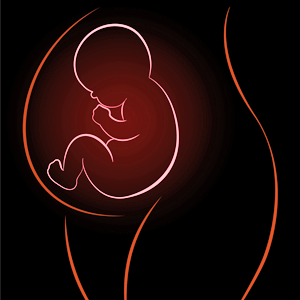
Despite a decline in the rate of stillbirths, more than 2.6 million stillbirths still occur worldwide each year - approximately 7 200 deaths daily, British researchers report.
A stillbirth is the death of a baby in the womb after 20 weeks of pregnancy. The researchers found that half of stillbirths occur during the birth process. Most (98 percent) of these deaths occur in low- and middle-income countries.
Read: How toxic chemicals are causing miscarriages, stillbirths and other health problems
The January 18 issue of the journal The Lancet includes a series of articles aimed at highlighting the issue of stillbirths.
"The number of stillbirths remains alarmingly high: 2.6 million stillbirths annually, with little reduction this past decade. But the truly horrific figure is 1.3 million intrapartum [during the birth process] stillbirths," wrote The Lancet editors Richard Horton and Udani Samarasekera in a related commentary.
"The idea of a child being alive at the beginning of labor and dying for entirely preventable reasons during the next few hours should be a health scandal of international proportions. Yet it is not," they wrote.
The research wasn't all bad news, however. The rate of maternal deaths dropped 3 percent. Newborn deaths declined 3.1 percent. And the rate of deaths among children younger than 5 declined 4.5 percent from 2000 to 2015, according to the team led by Joy Lawn at the London School of Hygiene and Tropical Medicine.
Read: The dangers of alcohol during pregnancy
Many causes of stillbirth are preventable, the study authors said.
For example, about 8 percent of stillbirths were caused by malaria infections, while almost another 8 percent were caused by syphilis infections. Maternal nutrition accounted for another 10 percent of stillbirths, the researchers said.
The study found wide variety in the rates of stillbirths based on region. Sub-Saharan Africa has the highest stillbirth rates, and the slowest rates of progress worldwide, according to the researchers.
Stillbirths remain a problem in some developed nations, particularly those with a wide gap between the rich and the poor, such as Iceland and Ukraine. In these countries, a woman living under poor socioeconomic conditions has roughly double the risk of having a stillborn child than more financially secure women, the researchers said.
Read: Male pregnancy is closer than you might think
Some high-income countries have made progress in reducing stillbirths. The most dramatic decrease was seen in the Netherlands, with almost a 7 percent drop between 2000 and 2015, the study showed.
Among low- and middle-income countries, Cambodia had the most significant decrease in stillbirths, with an almost 4 percent decline. Bangladesh followed with a 3.4 percent drop. The rate of stillbirths also fell nearly 3 percent in Rwanda, the researchers found.
Stillbirth rates for women of south Asian and African origin giving birth in Europe or Australia are also up to three times higher than white women, according to a second study team led by Dr. Vicki Flenady, at the Mater Research Institute at the University of Queensland in Australia. These study authors said this disparity could be addressed through education, better access to health care, improvements in maternal care and alleviating poverty.
The researchers noted that poor care plays a role in up to 30 percent of stillbirths in high-income nations.
A systematic approach to identifying the causes of stillbirth is needed, the study's authors said. Increasing the number of pregnant women with a healthy body weight is critical to improve pregnancy outcomes and long-term health, they added.
Read: Pregnancy test? There's an app for that!
The effects that stillbirth has on parents and families is often discounted, said a research team led by Dr. Alexander Heazell, from St. Mary's Hospital in Manchester, England. Parents report being discouraged from speaking about their experiences to avoid making others feel uncomfortable.
Researchers found, however, that up to 70 percent of grieving mothers in high-income countries have clinically significant symptoms following their baby's death. Grief, they noted, can persist for at least four years.
The study authors noted a stigma is often associated with stillbirth in many low- and middle-income countries.
Another study led by Dr. Luc de Bernis, of the UN Population Fund in Geneva, Switzerland, found the estimated 7 200 stillbirths that occur daily remain a hidden problem. Nearly half of deaths that occur during delivery are highly preventable with improvements in the quality of care and the early identification of high-risk pregnancies.
Also read:
Why obese women have more stillbirths




 Publications
Publications
 Partners
Partners














